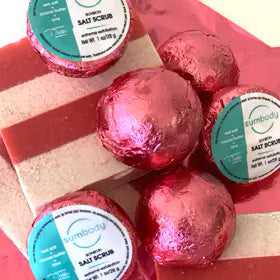What is it about October that is so special beyond the changing weather and fall foliage…? It is a time to reflect, remember and reeducate ourselves on the facts of breast cancer. October is National Breast Cancer Awareness Month. Most everyone has been touched in some way by this disease, just look at the stats:
- Breast cancer accounts for nearly 1 in 3 cancers among U.S. women
- 1 in 8 U.S. women will develop breast cancer in her lifetime
- An estimated 268,600 new cases of invasive breast cancer are expected to be diagnosed in 2019
- In 2019, breast cancer is expected to kill 41,760 people in the U.S.
- As of January 2019, there are more than 3.1 million women with a history of breast cancer in the U.S. This includes women currently being treated and women who have finished treatment.
Mainly striking women, this disease is one of their primary health concerns. Education at an early age, good medical care for all, and early detection is key.
Cosmetic chemicals are only one of the concerns plaguing our systems and bombarding us with unneeded toxins. We cannot change the air we breathe, but we can become educated and change the chemicals we slather on ourselves.
Although we use cosmetics to make us look, feel, and smell better, there is substantial research that strongly suggests some of these chemicals may contribute to the development of cancer in humans. This is not the feel better we are after. Adding to the frustration for the consumer who wants to be savvy about what they are exposing themselves to is the fact these products contain combinations of many different chemicals. This makes it a challenge, as we do not have enough information on how they affect us alone, let alone in combinations that are limitless.
Many of the chemicals in cosmetics are also used for applications such as cleaning industrial equipment or for pesticides. I find it odd that the same chemical used to clean an engine is also used in cosmetics.
In the U.S. major loopholes in federal law allow the cosmetics industry to put thousands of questionable chemicals into personal care products. These chemicals are deemed safe to use by the manufactures even when they are linked to cancer, infertility or birth defects. As these chemicals have been introduced into our environment, the breast cancer incidence has risen dramatically.
Some chemicals are considered hormone disruptors. These chemicals can affect how estrogen and other hormones act in the body. They both mimic and block them. This in turn disturbs your body’s natural hormonal balance. Since estrogen can make hormone-receptor-positive breast cancer develop and grow, it is important to reduce exposure to the chemicals that can act like estrogen.
Here are some simple things you can do:
- Limit your exposure by reducing the products you use
- Scrutinize the products you are buying
- Look for a safer sunscreen
Start your children out young with positive habits. EWG found that teenage girls’ bodies contained the same potentially hormone-altering chemicals found in many cosmetics and its report references earlier studies that link those chemicals to health risks, including cancer, in lab animals. The cosmetic industry is praying on your teen. Don’t let them win! Teach them less is more, make your own at home and remind them beauty is not in lipstick, it is within.
In addition to my top 10 chemicals to avoid also avoid these chemicals:
- Ethylene Oxide
- Polycyclic Aromatic Hydrocarbons (PAHs)
- Placental Extract.
- Lead
- Aluminum
I have been committed to reducing the toxic burden due to the overexposure to cosmetic chemicals. My goal has been to educate the public on the truth about this industry, how and why to avoid these chemicals, and how to make healthier choice.

